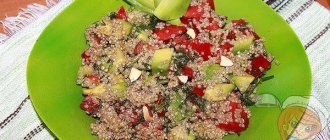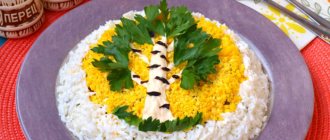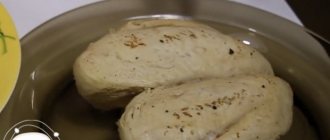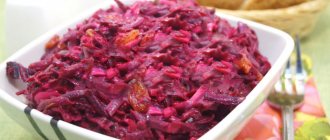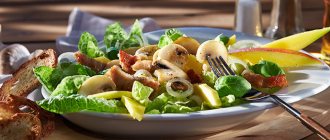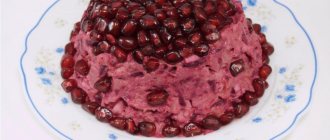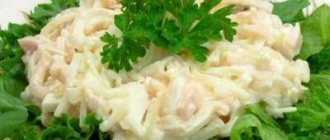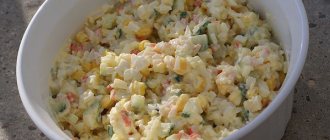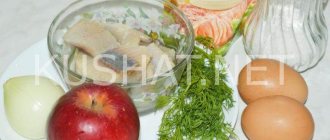Description
Rutabaga is a cold-resistant plant; its seedlings can withstand short-term frosts. Rutabaga can also tolerate heat and drought, but in this case its root vegetables become dry and tasteless.
Rutabaga recipes
similar in many ways to turnip recipes. However, rutabaga is much superior in nutritional value. Recipes with rutabaga recommend using it raw for making salads. If we cook at home, then after hot processing, namely fried, boiled and stewed. Rutabaga recipes say it is good in vegetable stews along with other vegetables. You can even use rutabaga as a filling for making pies. Fresh rutabaga tops can be used as a seasoning in salads. Dried tops are good in soups and sauces.
Rutabaga contains a high percentage of calcium and helps strengthen the skeletal system. Rutabaga seeds can be used as a gargle to relieve inflammation. The roots of this medicinal vegetable are considered an excellent wound-healing, anti-inflammatory and diuretic. Rutabaga juice is also an effective means for disinfecting and healing wounds.
Rutabaga is a valuable food product, especially in winter, when the lack of vitamins is most felt. This vegetable is included in the diet of patients with atherosclerosis. But it should be remembered that eating rutabaga and dishes made from it is contraindicated during exacerbations of diseases of the digestive system.
Recipes
Rutabaga can be used both as a medicine and in cooking.
General strengthening agent
The product is suitable for weakened organisms of all ages. It fights especially well against coughs, colds, pneumonia and bronchial asthma. The product is suggested to be taken at night, an hour or two after meals.
Take a large root vegetable, wash it, cut it into two halves. Cut a hole in each half (the pulp can be used for rutabaga salad) and put one large spoon of honey there. Leave for a day.
The released juice should be drunk, adding a new portion of honey to the recess. In the evenings, it is suggested to take a honey drink from one half. At the same time, healers recommend that women take dark varieties of honey for healing purposes, and men - light varieties.
After just 2 days, the patient feels an influx of strength and his appetite improves.
The benefits and harms of bell pepper for the human body https://woman-l.ru/polza-i-vred-bolgarskogo-perca/
Diuretic
Drink fresh rutabaga juice before meals in the evening and in the morning, 100 milligrams.
For skin problems
Fresh juice of the root vegetable can be used in the treatment of purulent wounds, boils and acne. To do this, you need to soak a cotton swab in the juice and make a compress for one hour at the affected area. The procedure should be repeated every day before going to bed. If you have rashes on your face, you can simply wipe it with fresh juice and wash it off after an hour.
After preparation, the juice should stand in the refrigerator for 30 minutes. Afterwards it can be preserved in the freezer, defrosting when needed.
For freckles and age spots
Add a couple of drops of lemon juice to fresh rutabaga juice and wipe your face daily.
Moisturizing mask
Mix 1 tablespoon of finely grated rutabaga with a teaspoon of sour cream. Apply to face. Duration of action - 15 minutes. It can be done twice a week. After the first use, peeling disappears, the skin becomes softer and more elastic.
For atherosclerosis and anemia
Regular consumption of 100 milliliters of freshly squeezed rutabaga juice throughout the day can help prevent these diseases.
For chronic constipation
Bake the rutabaga in the oven and then grind it using a blender. Eat mashed potatoes in the morning, before breakfast. After 30 days of continuous use of puree, stool improves, complexion becomes better, and the stomach tightens.
Rutabaga salad with herbs
For a salad, it is much better to take root vegetables with creamy rather than white flesh. They contain more mustard oils and have a distinct taste. Peel the root vegetable and grate it on a coarse grater, add salt, mix and place in the refrigerator.
Finely chop any greens and grind them with insufficient amount of salt. Add any vegetable oil, 10 milliliters of lime juice or any citrus to the greens and mix. Season the chopped rutabaga with the resulting green sauce. Before serving, the dish should sit in the refrigerator for a while.
If desired, you can sprinkle it with grated hard cheese or feta cheese. This salad quickly quenches your appetite and supplies the body with essential nutrients.
Rutabaga salad with apples
Elements for the salad can be taken in arbitrary quantities, determined according to your own taste. Before cooking, rutabaga should also be grated and a little salted. After that, cut one sour and one sweet apple into cubes, moisten them with any citrus juice to prevent darkening. Mix with rutabaga, season with sour cream or yogurt. Serve the salad immediately after preparation.
Casserole
Compound:
- 1 kg rutabaga;
- 2 eggs;
- 250 milliliters of water or milk;
- 100 grams of any cheese or feta cheese;
- butter and herbs to your taste.
Cut the peeled root vegetable into thin slices and steam until soft. Beat eggs with water or milk until smooth, add salt. Place the steamed and cooled rutabaga into a baking container and pour the egg mixture over it.
Grate the cheese, pour it into the mold and mix. Place pieces of butter on top and sprinkle with finely chopped herbs. The casserole is prepared within an hour at a temperature of 160 degrees. It can be eaten both cold and hot.
Baked rutabaga
When cooking in a conventional oven, it is better to first boil the rutabaga until soft, and then simmer a little with butter and seasonings. The dish stands out for its exclusive taste, satiety and low calorie content.
Taste qualities of rutabaga
The taste of rutabaga is a cross between turnip and cabbage. When raw or baked, rutabaga is aromatic, juicy and sweet. After cooking, it loses some of its sweetness and becomes more like potatoes.
Advice . To ensure that the root vegetable loses as little flavor and aroma as possible, cook it in its peel.
Regardless of the cooking method, it goes well with any type of cabbage, potatoes, meat, fish, milk, cheese, honey, nuts and apples.
Rutabaga recipes
Culinary recipes from rutabaga of many nations are so interesting that each dish has its own unique taste and aroma. But salads take first place among the rest.
Because they complement meat and fish dishes, side dishes, savory baked goods, and help digest fatty and floury foods. Let's look at a few cabbage turnip appetizers.
Rutabaga and apple salad:
- 4 apples;
- 2 turnips;
- 2 sprigs of parsley;
- 2 sprigs of celery;
- spoon of honey;
- spoon of lemon juice;
- sour cream for dressing.
We clean the turnips and apples, grate them, only remove the seeds from the apples. Mix these ingredients, pour juice, honey, sour cream over them. Decorate the top with parsley and celery.
You can also add pumpkin or celery root to this appetizer. If you don't like honey, then don't use it.
Rutabaga, ham and pistachio salad:
- 120 grams of turnips;
- 20 grams of salted pistachios;
- 100 grams of ham;
- 50 grams of radish;
- green onions;
- parsley;
- for dressing: 100 grams of mayonnaise, 2 tablespoons of mustard, pepper.
Boil the washed rutabaga, peel, cut into slices, also cut the ham into small pieces, radishes into circles. Finely chop the onion and parsley. Grind the pistachios into fine grains. Mix ingredients for dressing.
We put vegetables and ham in the dish, sprinkle pistachios and herbs on top, and pour over mustard-mayonnaise dressing.
Note: you can replace the ham with any other meat you like. It could be chicken, pork, beef, turkey. Just before adding to other ingredients, you need to cut it into pieces and fry in oil until cooked.
Rutabaga baked in cream with spices:
- 1.5 kg cabbage turnips;
- 2 tbsp. cream;
- 200 g breadcrumbs;
- ½ tbsp. sugar syrup;
- chicken egg;
- 1.5 spoons of ginger;
- ½ spoon each of nutmeg, white pepper;
- level spoon of salt;
- 20 g butter.
Peel the turnips and rinse with running water. Cut it into large pieces, boil in salted water until it becomes soft. Strain the broth into a saucepan and make a puree from the turnips.
Rutabaga is a root biennial plant from the cabbage family, which appeared as a result of the selection of turnips and white cabbage. It grows in moist soils and has a growing season of 110 to 120 days. Only two varieties have become widespread - Swedish and Krasnoselskaya.
In the first year of planting the seeds, roots and leaves grow, in the second - fruits in the form of multi-seeded pods and flowers.
The root looks and tastes like a turnip, only a little larger in size, round or oval with a gray-green or red-violet peel. The inside of the flesh is yellow, white or orange, depending on the variety.
To purchase a fresh root vegetable for your intended dish, you need to pay attention to its strength, so that there are no dents or green shoots. Give preference to medium-sized vegetables.
If you are not going to cook something from it right away, then transfer it to another bag, make several holes for air to pass through, and hide it in the refrigerator in the vegetable section. An hour before cooking, remove, wash and peel.
What to cook from rutabaga quickly and tasty
Simple recipes with rutabaga will diversify your diet and make it healthier and healthier.
Rutabaga with pork and potatoes
Hearty and healthy hot dish. Sprinkle with parsley before serving. Onions can be added a little earlier - 3-5 minutes before other vegetables. Then it will become completely soft.
Ingredients:
- 500 g pork;
- 750 g rutabaga;
- 500 g potatoes;
- 2 onions;
- 5 celery roots;
- 1 bay leaf;
- 1 tsp. marjoram;
- 0.5 tsp. caraway;
- 1 tbsp. l. flour;
- salt, pepper to taste.
Rutabaga soup recipe. Calorie, chemical composition and nutritional value.
Nutritional value and chemical composition of rutabaga soup.
The table shows the nutritional content (calories, proteins, fats, carbohydrates, vitamins and minerals) per 100 grams of edible portion.
| Nutrient | Quantity | Norm** | % of the norm in 100 g | % of the norm in 100 kcal | 100% normal |
| Calorie content | 22.4 kcal | 1684 kcal | 1.3% | 5.8% | 7518 g |
| Squirrels | 0.8 g | 76 g | 1.1% | 4.9% | 9500 g |
| Fats | 0.1 g | 56 g | 0.2% | 0.9% | 56000 g |
| Carbohydrates | 4.6 g | 219 g | 2.1% | 9.4% | 4761 g |
| Alimentary fiber | 1 g | 20 g | 5% | 22.3% | 2000 g |
| Water | 93.5 g | 2273 g | 4.1% | 18.3% | 2431 g |
| Ash | 0.225 g | ~ | |||
| Vitamins | |||||
| Vitamin A, RE | 138.3 mcg | 900 mcg | 15.4% | 68.8% | 651 g |
| beta carotene | 0.833 mg | 5 mg | 16.7% | 74.6% | 600 g |
| Lutein + Zeaxanthin | 6.803 mcg | ~ | |||
| Vitamin B1, thiamine | 0.02 mg | 1.5 mg | 1.3% | 5.8% | 7500 g |
| Vitamin B2, riboflavin | 0.014 mg | 1.8 mg | 0.8% | 3.6% | 12857 g |
| Vitamin B4, choline | 0.15 mg | 500 mg | 333333 g | ||
| Vitamin B5, pantothenic | 0.04 mg | 5 mg | 0.8% | 3.6% | 12500 g |
| Vitamin B6, pyridoxine | 0.062 mg | 2 mg | 3.1% | 13.8% | 3226 g |
| Vitamin B9, folates | 3.966 mcg | 400 mcg | 1% | 4.5% | 10086 g |
| Vitamin C, ascorbic acid | 1.96 mg | 90 mg | 2.2% | 9.8% | 4592 g |
| Vitamin E, alpha tocopherol, TE | 0.127 mg | 15 mg | 0.8% | 3.6% | 11811 g |
| Vitamin H, biotin | 0.096 mcg | 50 mcg | 0.2% | 0.9% | 52083 g |
| Vitamin K, phylloquinone | 1.7 mcg | 120 mcg | 1.4% | 6.3% | 7059 g |
| Vitamin RR, NE | 0.4232 mg | 20 mg | 2.1% | 9.4% | 4726 g |
| Niacin | 0.268 mg | ~ | |||
| Betaine | 0.002 mg | ~ | |||
| Macronutrients | |||||
| Potassium, K | 57.32 mg | 2500 mg | 2.3% | 10.3% | 4361 g |
| Calcium, Ca | 14.95 mg | 1000 mg | 1.5% | 6.7% | 6689 g |
| Magnesium, Mg | 7.56 mg | 400 mg | 1.9% | 8.5% | 5291 g |
| Sodium, Na | 5.54 mg | 1300 mg | 0.4% | 1.8% | 23466 g |
| Sera, S | 7.74 mg | 1000 mg | 0.8% | 3.6% | 12920 g |
| Phosphorus, Ph | 26.7 mg | 800 mg | 3.3% | 14.7% | 2996 g |
| Chlorine, Cl | 2.21 mg | 2300 mg | 0.1% | 0.4% | 104072 g |
| Microelements | |||||
| Aluminium, Al | 42.5 mcg | ~ | |||
| Bor, B | 9.6 mcg | ~ | |||
| Iron, Fe | 0.308 mg | 18 mg | 1.7% | 7.6% | 5844 g |
| Yod, I | 0.14 mcg | 150 mcg | 0.1% | 0.4% | 107143 g |
| Cobalt, Co | 0.341 mcg | 10 mcg | 3.4% | 15.2% | 2933 g |
| Lithium, Li | 0.433 mcg | ~ | |||
| Manganese, Mn | 0.0512 mg | 2 mg | 2.6% | 11.6% | 3906 g |
| Copper, Cu | 23.39 mcg | 1000 mcg | 2.3% | 10.3% | 4275 g |
| Molybdenum, Mo | 0.625 mcg | 70 mcg | 0.9% | 4% | 11200 g |
| Nickel, Ni | 0.144 mcg | ~ | |||
| Rubidium, Rb | 22.9 mcg | ~ | |||
| Selenium, Se | 0.017 mcg | 55 mcg | 323529 g | ||
| Fluorine, F | 78.03 mcg | 4000 mcg | 2% | 8.9% | 5126 g |
| Chromium, Cr | 0.1 mcg | 50 mcg | 0.2% | 0.9% | 50000 g |
| Zinc, Zn | 0.0964 mg | 12 mg | 0.8% | 3.6% | 12448 g |
| Digestible carbohydrates | |||||
| Starch and dextrins | 3.118 g | ~ | |||
| Mono- and disaccharides (sugars) | 1.5 g | max 100 g | |||
| Galactose | 0.016 g | ~ | |||
| Glucose (dextrose) | 0.256 g | ~ | |||
| Sucrose | 0.568 g | ~ | |||
| Fructose | 0.142 g | ~ | |||
| Essential amino acids | 0.036 g | ~ | |||
| Arginine* | 0.035 g | ~ | |||
| Valin | 0.028 g | ~ | |||
| Histidine* | 0.013 g | ~ | |||
| Isoleucine | 0.028 g | ~ | |||
| Leucine | 0.031 g | ~ | |||
| Lysine | 0.023 g | ~ | |||
| Methionine | 0.009 g | ~ | |||
| Methionine + Cysteine | 0.02 g | ~ | |||
| Threonine | 0.017 g | ~ | |||
| Tryptophan | 0.008 g | ~ | |||
| Phenylalanine | 0.03 g | ~ | |||
| Phenylalanine+Tyrosine | 0.046 g | ~ | |||
| Nonessential amino acids | 0.075 g | ~ | |||
| Alanin | 0.027 g | ~ | |||
| Aspartic acid | 0.047 g | ~ | |||
| Glycine | 0.024 g | ~ | |||
| Glutamic acid | 0.145 g | ~ | |||
| Proline | 0.067 g | ~ | |||
| Serin | 0.023 g | ~ | |||
| Tyrosine | 0.017 g | ~ | |||
| Cysteine | 0.011 g | ~ | |||
| Sterols (sterols) | |||||
| Phytosterols | 0.144 mg | ~ | |||
| Saturated fatty acids | |||||
| 16:0 Palmitinaya | 0.001 g | ~ | |||
| Monounsaturated fatty acids | 0.001 g | min 16.8 g | |||
| 18:1 Oleic (omega-9) | 0.001 g | ~ | |||
| Polyunsaturated fatty acids | 0.002 g | from 11.2 to 20.6 g | |||
| 18:2 Linolevaya | 0.002 g | ~ |
The energy value of rutabaga soup is 22.4 kcal.
Primary Source: Created in the application by the user. Read more.
** This table shows the average levels of vitamins and minerals for an adult. If you want to know the norms taking into account your gender, age and other factors, then use the “My Healthy Diet” application.
Tips for cooking and rolling
To make the dishes the most delicious, it is important to choose the right main ingredient – rutabaga. It should be smooth, without dents. A fruit that is too light in weight may indicate emptiness inside. Therefore, when choosing in a store, you should hold it in your hands and feel it.
At the beginning and at the end of preservation, it is necessary to sterilize the jars. This is done so that there are no microbes left in them and the workpieces are stored longer.
Before preparing, jars and lids are thoroughly washed with the addition of soda. Then sterilize over steam, in boiling water or in the oven.
Advice . For such procedures, it is better to purchase special hot tongs. Towels and oven mitts do not hold the temperature for long.
After filling the jars, they are placed in a large saucepan or basin of boiling water. Sterilize for 10-15 minutes. To cool, turn them upside down to ensure that the jars are completely sealed.
